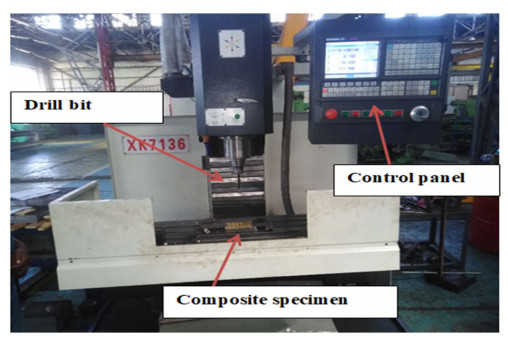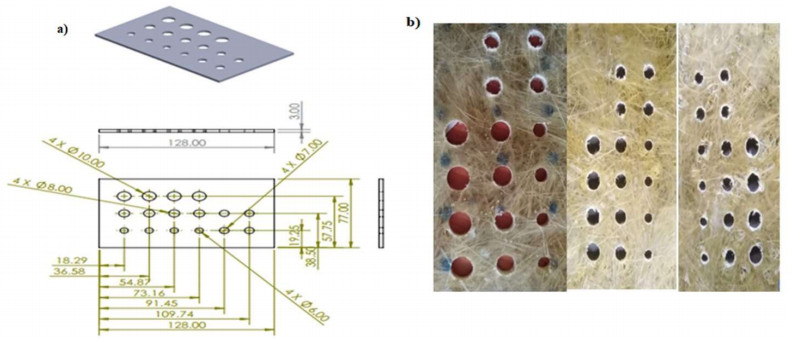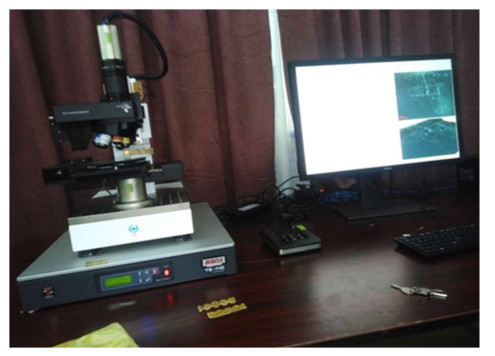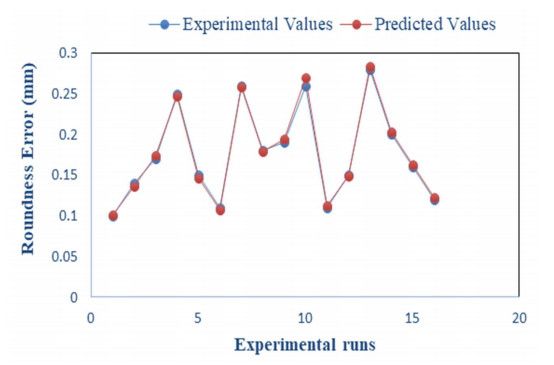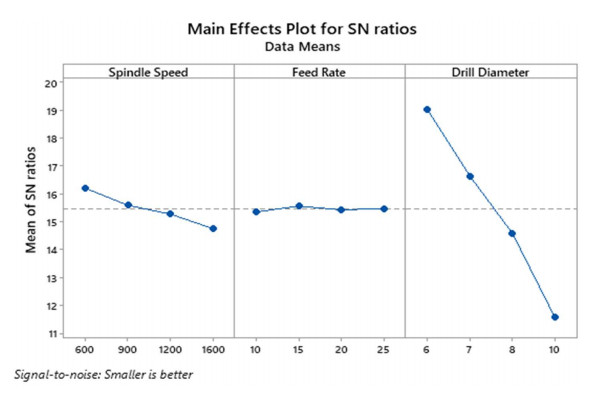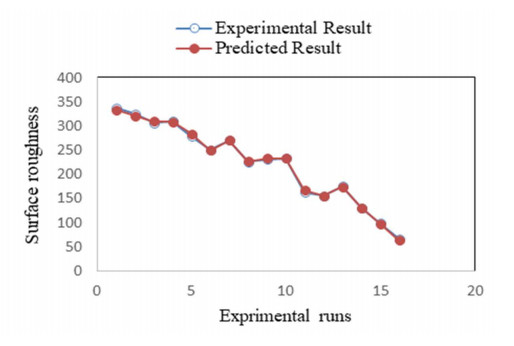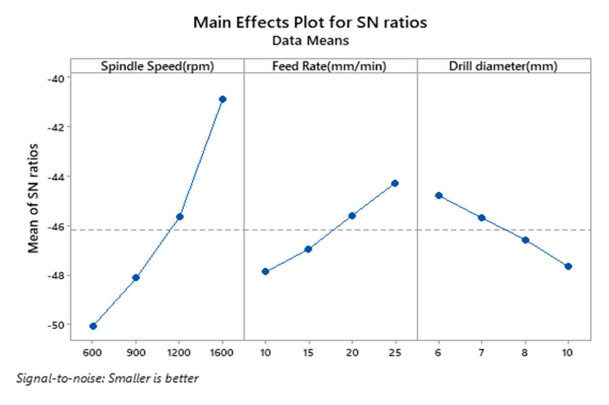1.
Introduction
Composite materials have got very wide applications in replacing metals in various industrial sectors due to its better mechanical and structural functionalities [1]. Particularly, researchers [2,3] clearly showed in their work that fiber-reinforced polymers (FRPs) are the most commonly used composite material in aerospace structures due to their unique properties such as high performance, lightweight, higher stiffness and better corrosion resistance. In the recent times, their applications are now widely extended to marine industries [4]. Different products including boat hulls, sonar domes, marine buildings, the water front barriers, the offshore structures, propellers and hatch covers are made from these materials [5,6,7]. Among the composites, natural fiber reinforced polymer composites have better specific strength, light weight, non-corrosive, environmental friendly and low cost materials. Due to these attractive features, they have got imminent applications in automotive industries. Currently, these industries consume large amount of composite materials as they have proven potential to reduce weight (10%), save energy (80% efficiency) and reduce cost (5%) [8]. For example, hybrid sisal-cotton fiber reinforced polyester composites are widely used in making different automobile parts namely, the Mercedes Benz (C-Class) rear panel shelf is made of sisal-cotton fiber, and 95% recyclable vehicles (Daimler Chrysler or M-B Travego Coach) consist of several components made from sisal, flax, coir, hemp and cotton fiber reinforced composites [9]. Since natural fiber based composites have very low weld-ability, they can be joined with other materials using fastening techniques.
Drilling is the most common machining process performed on composite materials, and it's mainly used to create circular profiles for fitting, followed by fasteners [10,11]. It is commonly performed on composite laminates and considered as an essential operation to join composites with other materials [12]. Several challenges are observed in drilling fiber reinforced polymer composites materials including delamination, inter-laminar cracks and fiber pull out [13]. These challenges arise from their heterogeneous, anisotropic, highly abrasive and hard nature of fibers, which causes drilling induced damage issues such as delamination [14]. Such inconveniences are capable of affecting the operating performance of components fabricated from these materials and thereby reduce consistency. In addition, the quality of machined surface is usually poor due to abrasive nature of the fibers.
In tribology, rough surfaces generally wear at faster rate, and have higher coefficient of friction than smooth surfaces. Therefore, roughness can be considered as a good indicator for mechanical component's performance as irregularities in the surface can form nucleation sites for cracks or corrosion. In drilled holes, roughness is very important quality characteristic because crack propagation, creep, wear, fatigue and corrosion mechanisms are mainly depend on the level of the surface irregularities. Dinesh et al. [15] performed comparative research on three natural fibers reinforced composite materials namely sisal/cotton, cotton/coconut sheath and sisal/coconut sheath reinforced with polyester which were fabricated and examined for their mechanical properties: tensile strength, flexural strength and impact strength. They revealed that sisal/cotton polyester composite possess good performance characteristics as compared to the others. Kurt et al. [16] employed Taguchi method to optimize machining parameters for better surface roughness and hole diameter accuracy during dry drilling of composite material. They considered three cutting parameters namely insertion radius, feed rate and cutting depth in the analysis and they determined optimum set up for reduced surface roughness and better hole diameter accuracy. Davim and Reis [17] proposed effective methodology using the Taguchi method and ANOVA to evaluate the relation between cutting speed and feed rate with delamination in a composite laminate. Korkut et al. [18] also used Taguchi method to experimentally assess circularity deviation in the bored hole of composite materials. Similarly, a research work on evaluation of thrust force and surface roughness using Taguchi analysis and neural network in drilling composite material was presented by Tsao and Hocheng [19]. They showed that feed rate and the drill diameter are considered to be the most influential factors affecting the thrust force, while the feed rate and spindle speed are seen to make the greatest contribution to the surface roughness. Sahoo et al. [20] revealed that surface roughness of machined parts affects mechanical properties of the components such as fatigue behavior, corrosion resistance, creep life, etc. Other functional qualities of components such as friction, wear, light reflection, heat transfer, lubrication and electrical conductivity are also appreciably affected by surface conditions of machined parts. About the drilling of jute fiber reinforced polymer composites research, Hadi et al. [21] evaluating the effect of machining conditions on thrust force, delamination size, and surface roughness of jute fiber reinforced polymer composites using full factorial experimental design technique. And they suggested that the type of drill bit has a significant effect on both delamination factor and surface roughness in drilling FRP composites. High speed steel (HSS) twist drill results in a smaller delamination scale than that of Coro-Drill 854 and Coro-Drill 856.
Taguchi method was developed by Taguchi and Konishi [22] as a statistical tool, and it was initially designed to improve the quality of manufactured products, then its application was extended to many other engineering fields such as biotechnology [23]. Taguchi's efforts have been recognized by professional statisticians, especially in the creation of models for studying variations in a process. Progress in achieving the desired outcomes requires careful selection of process parameters and ascertaining them into factors of control and noise. The choice of control factors must be made in such a way that the influences of noise factors are nullified. In addition, to obtain the best result for the operation, Taguchi method requires identification of proper control factors and their levels. To perform a series of experiments, orthogonal arrays (OA) are designed to address the entire process parameters with small number of experiments [24]. In the current research, an attempt has been made to establish an approach in which Taguchi's method was adopted to optimize machining parameters for better drill hole accuracy and surface roughness. The challenges in drilling natural fiber reinforced composites were addressed and optimal machining parameters for drilling hybrid sisal-cotton fibers reinforced composites were determined. Meanwhile, mechanical properties of hybrid glass-sisal fiber reinforced composite are also evaluated.
2.
Materials and methods
2.1. Materials
The matrix material used to fabricate the composite specimens was polyester resin including catalyst (cobalt), accelerator (methyl ethyl ketone) and releasing agent (polyvinyl acetate) which was supplied by local paint and adhesive materials supplier. Hybrid sisal and cotton fibers were used to reinforce the composite material. The origin of sisal and cotton plants was from Dugda Woreda, Oromia Region, Ethiopia. Both fibers were extracted manually using decortication method from their plants. The fabricated composite has a composition of 30 wt% of fibers (with 15 wt% of sisal fiber and 15 wt% cotton fiber) and the remaining was polyester resin including the hardener. To remove the flesh and debris from the fiber surface, the extracted fibers were washed with distilled water and then sun dried for 72 h. In addition, chemical treatment of fibers using 10% NaOH solution was made with the purpose of improving surface adhesive characteristics by removing fatty impurities like lignin. Finally, treated fibers were washed again in distilled water, sun dried for 72 h and packed in the plastic bags to protect it from moisture contamination.
2.2. Composite specimen preparation
The sisal and cotton fibers were chopped into 30 mm length using scissors, and the weight of each fibers and matrix were determined using rule of mixture. Composite specimens were fabricated using hand lay-up technique followed by light compression load, and the image of composite during fabrication placed within the mold is shown in Figure 1.
2.3. Drilling of composite specimens
Experimental plan was made using L16 OA of Taguchi method. Factors considered and their levels are given in Table 1. Three drilling parameters namely spindle speed, feed rate and drill diameter were considered and the response variables were hole roundness error and surface roughness. All specimens were drilled in a dry lubricating condition. The experimental values for each selected drilling parameters are depicted in Table 2 for all experimental runs.
Composite plates fabricated using hand lay-up technique have dimensions of 228 × 77 × 3 mm, and four HSS drill bits with helix angle of 30°, point angle of 135° and diameters as provided in Table 1 were utilized for creating holes. The selection of twist HSS drill bit was based on the fact that HSS drill is result in relatively smaller delamination scale than other tool materials [21]. In addition, HSS drill can capable to provide a lower trust force and better hole quality than carbide tools as revealed by Amirhossein et al. [25]. GSK computer numerical control (CNC) vertical milling machine was used to perform the drilling operation for the selected parameters, and the machine set up for drilling the composite is shown in Figure 2.
All drilling operations were carried out using part programs generated by Mastercam-X4 software. Drilled hole's geometry and its image after drilling operation are depicted in Figure 3a, b.
2.4. Roundness error and surface roughness
2.4.1. Determination of roundness error
Hole accuracy described in terms of roundness error was measured, and for each hole circularity, the maximum and minimum diameters were determined by taking eight successive measurements in 22.5° variations. Precision ABS digital caliper with least count of 0.01 mm was used to measure the variance in diameter of all 16 individual holes of each composite specimen. From each measurement, the maximum and minimum values of diameter were used to compute roundness error using Eq 1 in a continuous manner, and then the roundness error values were utilized in Taguchi's L16 OA for further analysis. where Dmax is the maximum hole diameter and Dmin is the minimum hole diameter.
2.4.2. Surface roughness measurement
Surface roughness of drilled hole on the composite specimens was measured using zeta 3D optical profilometer and the values are described using arithmetic mean roughness (Ra) as it is one of the most widely used surface roughness measures. All drilled composite specimens were cut into half section for ease of measurement and consistency, and measured surface roughness values were taken at 10× lens magnification for better precision. The setup adopted for surface roughness measurement using optical profilometer is shown in Figure 4. Surface roughness in Ra means that the value generated by using Eq 2 are described in micrometer (μm) when only the reference length of the roughness curve is taken in the location of the mean line, x-axis in the direction of the mean line and y-axis in the path of the longitudinal magnification of sample component. Ra parameter was determined using Eq 2 in which y = f(x) describes the roughness curve. Where lγ represents reference length of the roughness.
3.
Results and discussions
3.1. Hole roundness accuracy
The effect of drilling parameters namely spindle speed, feed rate and drill diameter on hole accuracy (roundness error) and surface roughness were analyzed using statistical tool. The experimental results obtained for roundness error and surface roughness are depicted in Table 3.
Based on the determined roundness errors, the linear polynomial model, Eq 3, was generated using commercially available MINITAB 19 software for different experimental conditions.
where, RE is roundness error in mm, S is spindle speed in rpm, F is feed rate in mm/min and D is drill diameter in mm. Experimental, predicted and mean error (%) values for hole accuracy were determined and summarized in Table 4, and pictorially represented in Figure 5.
3.2. The signal to noise ratio analysis
In Taguchi approach, the term signal is the desirable value (mean) for the output characteristic and the term noise is the undesired value (standard deviation, SD). The signal to noise (S/N) ratio, therefore, is the ratio of desired value to undesired value. To evaluate the quality attribute that deviates from the target value, Taguchi used the S/N ratio. Depending on the type of characteristic, there are several S/N ratios available: smaller-is-better, nominal-is-best, and larger-is-better [26,27]. The S/N ratio for objective function of smaller-is-better is determined using Eq 4.
where y is the observed data, and n is number of observations.
Using Eq 4, the results for S/N ratio for hole accuracy are given in Table 5, and it clearly indicates that drill diameter is the most significant factor influencing hole roundness error and ranked 1st.
Figure 6 shows main effect plots of S/N ratio for hole roundness error from which optimum combination of drilling parameters are obtained as spindle speed of 600 rpm, feed rate of 15 mm/min and drill diameter of 6 mm.
3.3. Analysis of variance for hole accuracy
Analysis of variance (ANOVA) determines the relative significance of factors in terms of their percentage contribution to the response [26,27]. For the estimation of variance of error for the effects and at confidence interval of 95%, ANOVA was determined and provided in Table 6. Drilling parameter's effect contribution (%) was found as 3.19%, 0.25% and 96.49% for spindle speed, feed rate and drill diameter, respectively.
3.4. Surface roughness of hole
Based on the obtained surface roughness values for different experimental conditions, linear polynomial model, as given in Eq 5, was developed to relate it with the drilling parameters. Where, SR is hole surface roughness of drilled holes in Ra.
The experimental and predicted values of surface roughness are given in Table 7. In addition, the predicted values are compared with experimental values and depicted in Figure 7.
3.5. The S/N ratio analysis for surface roughness
Using Eq 4, S/N ratio for surface roughness was determined and presented in Table 8. From the S/N ratio responses, it can be noted that spindle speed is the most significant factor influencing surface roughness and it is indicated with the 1st rank.
Figure 8 shows the effect of drilling parameters on surface roughness and the optimum values based on their level of contribution. Based on the overall analysis and the main effect plots for S/N ratio, the optimum operating conditions for drilling holes on the composite material for reduced surface roughness are mainly 1600 rpm, 25 mm/min and 6 mm of spindle speed, feed rate and drill diameter, respectively.
3.6. Analysis of variance for surface roughness
A variance analysis determines the relative significance of the factors in terms of their percentage contribution to the response [26,27]. To obtain the percentage contribution for each of the drilling parameters, S/N ratio was determined at confidence interval of 95%.
From Table 9, it is observed that spindle speed has contribution of 86.33% and considered as most dominant factor affecting surface roughness whereas feed rate and drill diameter account for 9.7% and 3.94% contributions, respectively. Since the P-values are lower than 0.05 for all drilling parameters, the three parameters are significant and require close control.
3.7. Verification of optimum machining parameters
Verification of optimum machining parameters in reducing roundness error and surface roughness based on the analysis using Taguchi's method was conducted. In case of hole roundness error, the optimum values for better hole accuracy were 600 rpm, 15 mm/min and 6 mm in which drill diameter has most influence with the contribution of 96.49%. From this, we can deduce that spindle speed and feed rate effect to reduce roundness error are relatively less significant because these parameters are dominated by drill diameter. On the other hand, from the surface roughness analysis, the optimum values for reduced surface roughness were 1600 rpm, 25 mm/min and 6 mm in which spindle speed and feed rate accounts 86.33% and 9.7% contributions, respectively. This shows spindle speed and feed rate contribute 96% effect on the surface roughness and drill diameter has relatively smaller effect on the surface roughness according to the analysis. To reduce both roundness error and surface roughness based on the experimental analysis, the optimum machining parameters that have been selected and verified are 1600 rpm, 25 mm/min, and 6 mm. Roundness error measured for optimum drilling conditions were: 0.1, 0.11, 0.1 and 0.1 for four drilled holes which verifies the experimental result is reliable. Similarly, surface roughness values for the optimum conditions are obtained as Ra: 77.66, 51.88, 64.97 and 64.64 for the four drilled holes, respectively.
In general, the experimental verification was performed based on recommended optimum machining parameters which are 1600 rpm spindle speed, 25 mm/min feed rate and 6 mm drill diameter. The values of roundness error and surface roughness obtained are 0.1mm and 64.8 Ra respectively, which satisfies the objective of achieving reduced roundness error and surface roughness.
4.
Conclusion
This paper presents optimization of machining parameters namely, spindle speed, feed rate and drill diameter for better machining performances (hole accuracy and surface roughness) in drilling hybrid sisal-cotton fiber reinforced polyester composite with 30 wt% of fibers in polyester resin. Taguchi's L16 OA and ANOVA were utilized for experimental design and analysis purpose. Based on the experimental results and analysis, the following conclusions are drawn.
(1) Using the L16 orthogonal array, statistically designed experiments are performed to examine the impact of drilling parameters on hole roundness error and surface roughness.
(2) Based on the ANOVA and S/N ratio, optimum machining condition for better hole accuracy was determined as 600 rpm, 15 mm/min and 6 mm of spindle speed, feed rate and drill diameter, respectively. Similarly, optimum drilling condition for reduced surface roughness was found as 1600 rpm, 25 mm/min and 6 mm of spindle speed, feed rate and drill diameter, respectively.
(3) Based on ANOVA, drill diameter (96.49% contribution) has greater influence on the hole roundness error compared to spindle speed (3.19% contribution) and feed rate (0.25% contribution), and spindle speed (86.33%) and feed rate (9.7%) have greater influence on the surface roughness compared to drill diameter (3.94%) of the drill bit.
(4) From observations, the optimum combination of the machining parameters and drill diameter for drilling hybrid sisal-cotton fiber reinforced polyester composite are determined as 1600 rpm of spindle speed, 25 mm/min of feed rate and 6 mm of drill diameter.
(5) Confirmation test was conducted to verify the experimental results and it showed that the experimental results are proven to be reliable.
(6) The results of current research can be directly applied for design and fabrication of natural fiber reinforced composite parts particularly in automotive industries including bumper covers, roof frames, door frames, door panels, engine valve covers, dashboards, and truck car mats [28,29].
(7) In our future research, the effect of drilling parameters on thrust force, tool life, assessment of appropriate lubricating conditions and other damages induced due to drilling on the composites will be extensively addressed.
Acknowledgment
The authors would like to thank Addis Ababa Institute of Technology for funding this research.
Conflict of interest
The authors decide to declare that we have no conflicts of interest in this work.
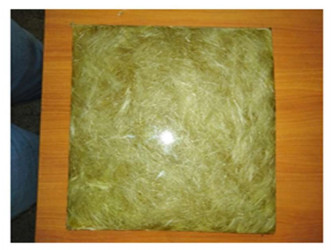









 DownLoad:
DownLoad:
